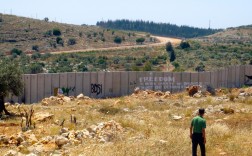Category: Journals
-
Palestinian farmer wounded by Israeli army fire
7th June 2013 | International Solidarity Movement, Rosa Schiano | Gaza, Occupied Palestine Sunday morning a young Palestinian farmer was wounded by Israeli army fire in an area called Abu Safiyeh, East of Jabalia, in the Northern Gaza Strip. The young man, Ahmad Hamdan, 21, was rushed to the hospital Kamal Odwan. We went to…
-
Two Palestinian fishermen arrested in Gaza waters and their boat confiscated
28th May 2013 | International Solidarity Movement, Gaza Team | Gaza, Occupied Palestine Mahmoud Mohammed Zayed, 25, and his brother Khaled, 24, are two young fishermen of Gaza. At about 9pm on Sunday, May 19th 2013, they were fishing on their small rowing boat in the waters north of the Gaza Strip, in front of…
-
Revisiting Ni’lin after four years
2nd May 2013 | International Solidarity Movement, Ni’lin, Occupied Palestine By Team Nablus It’s been four years since I had visited and lived in Ni’lin and the decision to visit on Friday filled me simultaneously with excitement and longing but also dread. Four years ago I had supported the non violent resistance in Ni’lin as…


